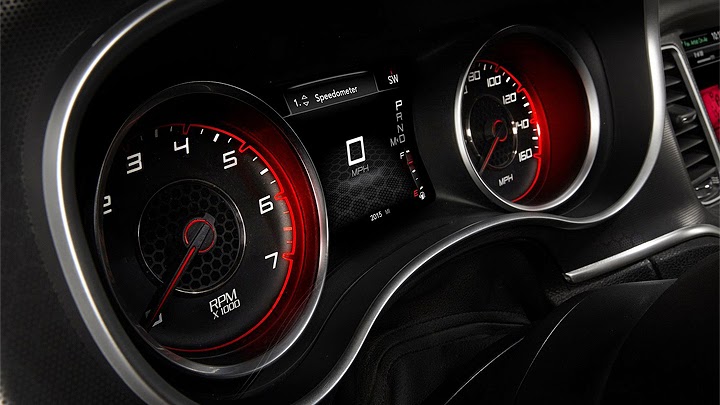
Dodge’s sedan makes such a great option on its segment because it goes the opposite way of all its competitors. The typical image of full-size sedan, specially in North America, pictured a long, heavy vehicle with bland design filled with chrome items outside and beige and brown accents inside, along with even more discreet powertrain options. The only changes this stereotype went through in the past few years were adding trim levels with hybrid propulsion and more modern styling, but they’re still essentially nonchalant. So if you really need to take one of those, which is not uncommon, Charger results such a great option because it pairs most of the abstract values of its original incarnation with all the characteristics of a vehicle capable of satisfying a much larger public.
This facelift was claimed to make the sedan look smaller and lighter without affecting its “four-door muscle car” image. The results start with a great design move applied to the front fascia: the more elements a given section distinguishes, like front, side and rear ends, the more your attention will divide itself in order to observe it. And, therefore, the harder it’ll be to remember. So, connecting lights and grilles as this big section painted in black creates only one contrast with the body color, which is specially great for sports cars because the impact gets much bigger. This visual solidness is repeated at the sides, whose long hood and well-divided silhouette surely attracts the traditional car fans, and at the rear, whose bumper and lights took inspiration from the current Dart and Durango.










Entering the car will reveal a more sophisticated interpretation of what the refreshed Challenger received at the same time (both come from the same project). In other words, soft-touch material appears in several surfaces, along with upholstery options ranging from cloth to leather. There are new sporty steering wheel and dashboard, the latter being another reminder of the latest Dodges. The instrument cluster welcomes a 7” TFT screen, which shows programmable information including the company’s Performance Pages, while the center console houses a touchscreen of standard 5” or optional 8.4” – Chrysler UConnect’s plethora of infotainment functions appear once again.
The reinvented Charger can also bring the entire typical set of electronic safety systems and, just like its coupé sibling, had its powertrain options almost untouched. The base engine is a 3.6L V6, good for 292 hp and 260 lb-ft. If you want to make it interesting, the 5.7L Hemi V8 reaches 370 hp and 395 lb-ft and comes in R/T and R/T Road and Track trims (the car offers a total of eight). And if you’re still thirsty for speed, the SRT variations will suit you with the 6.4L V8 and its expected 470 hp and 470 lb-ft. The first two engines will always come with an eight-speed automatic transmission. Another interesting feature is the electronic shift, which makes a change in 400 milliseconds at the normal mode or, at Sport mode, changing the gear in 250 milliseconds. And not until it reaches the redline.